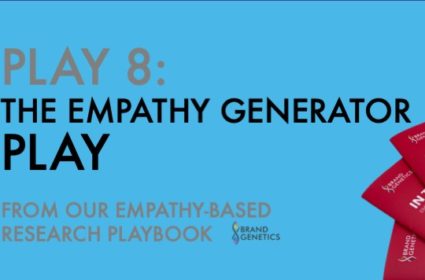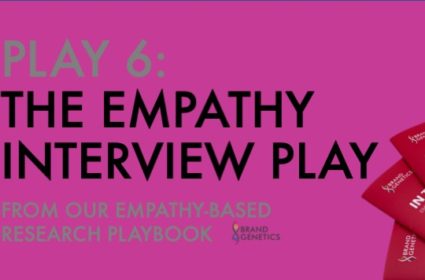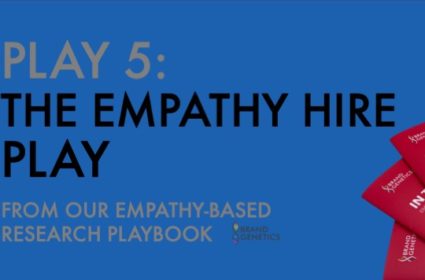Empathy-Based Research: The Empathy Map Play

This article is part of our series on Empathy- based Research. You can view the full series or download the report.
Download ReportThis week, in our penultimate blog of this series, we highlight how you can map the world from another’s perspective, to better understand how they feel, with play 7 from our brand-new Empathy Playbook.
As a reminder, as innovation and research become increasingly dominated by quantitative data analytics and algorithms, market researchers need empathy more than ever to see the humans behind the numbers. Empathy is our ability to see and feel things from someone else’s perspective, and the key benefit is that it generates emotional insight into the feelings, motivations and needs that drive behaviour.
As a result, we’ve put together this playbook of practical empathy-based activities to help you research and innovate better from a consumer perspective.
Play 7: The Empathy Map Play
When you need the play:
The empathy map play is a simple mapping exercise that forces you to think from someone else’s perspective. The empathy map play works by facilitating perspective-taking. As you summarise their “perceptual world” of thoughts, feelings, actions and experiences, you begin to see and feel the world from their perspective.
As a result, the empathy map play is a useful tool whenever you quickly need to see something from someone else’s perspective. This includes clients, colleagues, internal stakeholders, or indeed consumers. At Brand Genetics, we find client empathy maps particularly useful when writing proposals and reports, because they help sensitise us to the motivations and meanings that lie behind a brief.
How it works:
To run the empathy map play, you can use one of the many empathy map templates that are freely available online; indeed you can find one in our playbook! Or you can create your own. To keep the map usable, stick to mapping four to five of the most pertinent experiential dimensions:
- HEAR – What are they hearing from others, what words resonate?
- FEEL – What are they feeling, in terms of mood and emotions?
- THINK – What are they thinking in this situation?
- WANT – What do they want from the situation, what is the “job-to-be-done”?
- FEAR – What do they fear might happen?
- SAY – What are they saying about the situation, what words do they use?
- DO – What are they doing in the situation?
Now is your chance to try this in a real-world situation and start to introduce more empathy to your decision making!
If you want to be a more empathic business and introduce human-first insight and innovation – Brand Genetics can help. Get in touch today to find out more!




